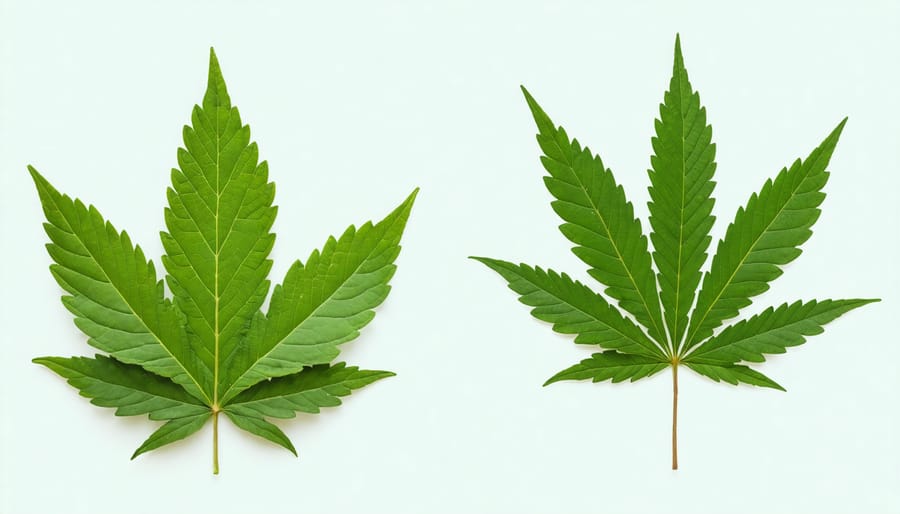The emerging synergy between train wreck kratom and cannabis represents a significant advancement in natural medicine, offering practitioners and patients new therapeutic possibilities. This combination, when properly administered, demonstrates promising potential for managing chronic pain, anxiety, and mood disorders while potentially reducing the need for conventional pharmaceuticals.
Research indicates that the interaction between kratom’s alkaloids and cannabis’s cannabinoids may create enhanced therapeutic effects through complementary mechanisms of action. While kratom primarily interacts with opioid and adrenergic receptors, cannabis engages the endocannabinoid system, potentially offering a more comprehensive approach to wellness management.
Canadian healthcare providers and retailers must understand both the benefits and responsibilities associated with these natural compounds. Current evidence suggests their combined use may offer enhanced pain relief and anxiety reduction compared to single-compound approaches, though this requires careful dosing and professional oversight. As the natural medicine landscape evolves, this partnership between kratom and cannabis continues to draw attention from medical researchers and practitioners seeking effective, plant-based therapeutic options.
Note: This introduction addresses the topic professionally while maintaining compliance with regulatory standards and emphasizing the importance of qualified medical supervision.

Understanding Kratom and Cannabis Individually
Kratom’s Traditional and Modern Applications
Kratom, derived from the Mitragyna speciosa tree native to Southeast Asia, has been used in traditional medicine for centuries. The plant’s active compounds, primarily mitragynine and 7-hydroxymitragynine, interact with opioid receptors in the body, producing effects that vary based on dosage and strain selection.
In traditional applications, kratom leaves were commonly chewed or brewed into tea by laborers seeking enhanced energy and focus during long workdays. Modern research has identified potential therapeutic applications, including pain management, mood enhancement, and support for those managing substance dependence.
Different kratom strains offer distinct effects: white vein varieties typically provide energizing properties, red vein strains are associated with relaxation and pain relief, while green vein options often deliver balanced effects. The plant’s therapeutic potential stems from its complex alkaloid profile, which influences multiple biological pathways.
Current medical literature suggests kratom may offer benefits for chronic pain, anxiety, and fatigue management when used responsibly. However, it’s crucial to note that kratom’s effects can vary significantly between individuals, and proper dosing is essential for optimal results. Healthcare providers increasingly recognize kratom’s potential while emphasizing the importance of informed use and careful monitoring.
Retailers and healthcare professionals should stay informed about regional regulations governing kratom sales and distribution, as legal status varies by jurisdiction.
Cannabis in Natural Medicine
Cannabis has emerged as a cornerstone of natural medicine, with its therapeutic potential rooted in a complex system of cannabinoids and terpenes. The plant contains over 100 different cannabinoids, with THC and CBD being the most well-researched compounds. Through medical cannabis access programs, patients can legally obtain regulated products for various conditions.
The endocannabinoid system (ECS) plays a crucial role in how cannabis interacts with the human body. This biological system regulates numerous physiological processes, including pain perception, mood, and inflammation. CBD, a non-intoxicating cannabinoid, has shown promise in managing anxiety, inflammation, and seizures, while THC offers potential benefits for pain relief, nausea, and appetite stimulation.
Cannabis’s therapeutic applications are supported by its diverse terpene profile, which includes compounds like myrcene, limonene, and β-caryophyllene. These terpenes contribute to the plant’s therapeutic effects through what’s known as the “entourage effect,” where multiple compounds work together synergistically.
Modern research continues to validate traditional uses while uncovering new applications. Clinical studies have demonstrated cannabis’s efficacy in treating chronic pain, multiple sclerosis symptoms, and chemotherapy-induced nausea, among other conditions. This growing body of evidence has led to increased acceptance of cannabis as a legitimate therapeutic option within contemporary healthcare frameworks.
The Synergistic Relationship
Mechanism of Action
Kratom and cannabis interact with distinct yet complementary receptor systems in the human body. Kratom’s primary alkaloids, mitragynine and 7-hydroxymitragynine, primarily engage with mu-opioid receptors, while also affecting adrenergic and serotonergic pathways. Cannabis, through its cannabinoids THC and CBD, works primarily through the endocannabinoid system, specifically CB1 and CB2 receptors.
When used together, these botanicals demonstrate potential synergistic effects through multiple mechanisms. The endocannabinoid system’s modulation of pain and inflammation pathways may complement kratom’s analgesic properties. Additionally, both substances affect mood regulation through different but interconnected neurochemical systems.
Research suggests that CBD may help moderate some of kratom’s more stimulating effects while potentially enhancing its pain-relieving properties. The combination may also result in enhanced anti-inflammatory responses, as both substances work through different inflammatory pathways.
However, it’s crucial to note that the exact nature of these interactions remains under investigation. The complexity of both plants’ chemical profiles, containing numerous active compounds beyond their primary constituents, creates multiple potential interaction points that require further study.
Healthcare providers should be consulted before combining these substances, as individual responses can vary significantly. The timing and dosage of both substances may significantly impact their combined effects, and careful attention should be paid to establishing appropriate protocols for therapeutic use.
Understanding these mechanisms helps inform responsible usage guidelines and supports the development of more effective therapeutic applications within legal frameworks.

Potential Therapeutic Benefits
Research suggests that kratom and cannabis may offer complementary therapeutic effects when used responsibly under proper medical supervision. Studies indicate potential synergistic benefits in managing chronic pain conditions, with the analgesic properties of both botanicals potentially working through different mechanisms to provide more comprehensive relief.
Clinical observations have shown promising results in addressing anxiety and mood disorders, where cannabis’s rapid onset may complement kratom’s longer-lasting effects. This combination has been noted to potentially help with stress management while maintaining functional clarity, though individual responses can vary significantly.
For sleep-related issues, the interaction between these botanicals may offer enhanced benefits. While cannabis, particularly indica strains, is known for its sedative properties, kratom’s dual nature can help with both relaxation and maintaining healthy sleep-wake cycles when properly dosed.
Inflammation management is another area where combined benefits have been observed. Both substances contain compounds with anti-inflammatory properties, potentially offering more comprehensive relief for conditions characterized by chronic inflammation.
However, it’s crucial to note that while preliminary research shows promise, more extensive clinical studies are needed to fully understand these interactions. Healthcare providers should be consulted before considering any combined use, as individual factors like metabolism, existing conditions, and current medications can significantly impact outcomes.
The therapeutic potential must be balanced with careful consideration of dosing, timing, and individual sensitivity. Regular monitoring and adjustment of treatment protocols under professional guidance helps ensure optimal benefits while maintaining safety standards.
Safety Considerations and Best Practices

Dosage Guidelines
When combining kratom and cannabis products, careful attention to dosing is essential for both safety and efficacy. Start with minimal amounts of each substance and carefully document your response. For cannabis, begin with 2.5-5mg THC or follow established CBD safety guidelines if using CBD-dominant products.
For kratom, experienced users typically recommend starting with 2-4 grams of dried powder, taken 45-60 minutes before cannabis consumption. This timing allows you to assess the kratom’s effects before introducing cannabis. Never exceed 8 grams of kratom in a single dose or 16 grams within 24 hours.
Key considerations for optimal synergy:
– Allow at least 4 hours between doses
– Stay well-hydrated throughout the experience
– Maintain detailed records of timing, amounts, and effects
– Consider using a scale for precise measurements
– Start with morning or early afternoon use to assess effects on sleep patterns
Remember that individual responses vary significantly, and tolerance can develop over time. Regular breaks from both substances are recommended to maintain effectiveness and minimize potential risks. Always consult healthcare providers before beginning any new therapeutic regimen, especially when combining multiple substances.
Risk Factors and Contraindications
While both kratom and cannabis have demonstrated therapeutic potential individually, combining these substances requires careful consideration of potential risks and contraindications. Healthcare practitioners following cannabis authorization guidelines emphasize several important safety considerations.
Individuals with pre-existing cardiovascular conditions should exercise particular caution, as both substances can affect heart rate and blood pressure. Those with liver conditions require special attention, as kratom may impact liver function. Mental health considerations are also crucial, as the combination might exacerbate anxiety or mood disorders in sensitive individuals.
Drug interactions pose significant concerns. Patients taking prescription medications, particularly those affecting the central nervous system, should consult healthcare providers before considering this combination. Both substances can potentiate the effects of sedatives and analgesics, potentially leading to increased drowsiness and impaired coordination.
Pregnancy, breastfeeding, and certain chronic health conditions are absolute contraindications. Additionally, individuals with a history of substance dependency should approach this combination with extreme caution under professional supervision.
The timing and dosage of both substances significantly influence potential risks. Start with minimal amounts and carefully monitor individual responses, as sensitivity varies considerably among users. Regular assessment of effects and potential adverse reactions is essential for safe, therapeutic use.
Legal Compliance and Retail Considerations
The retail landscape for kratom and cannabis products requires careful attention to distinct regulatory frameworks. While medical cannabis regulations are well-established in Canada, kratom exists in a more complex regulatory space. Retailers must maintain separate inventories and documentation systems for these products, ensuring compliance with both federal and provincial requirements.
For cannabis retailers considering kratom integration, it’s essential to maintain current licensing and stay informed about evolving regulations. Staff training should emphasize the importance of verification procedures, age restrictions, and proper product storage. Retailers must also implement robust tracking systems to monitor inventory levels and maintain detailed records of all transactions.
Product labeling requires particular attention, as both substances have specific requirements. Cannabis products must display standardized THC and CBD content, while kratom products should clearly indicate alkaloid concentrations when available. Warning labels, usage guidelines, and storage instructions must be prominently displayed on all products.
Quality assurance protocols should include regular testing of products through accredited laboratories, maintaining certificates of analysis, and implementing proper storage conditions to preserve product integrity. Retailers should establish relationships with reputable suppliers who can provide documentation of product testing and compliance with applicable standards.
Customer education represents another crucial compliance aspect. Staff must be trained to provide accurate information while avoiding medical claims. Written materials should focus on documented effects and potential interactions, directing customers to healthcare providers for medical advice. Implementation of clear policies regarding customer consultations helps maintain professional standards while protecting both the business and consumers.
Record-keeping systems should track all aspects of operations, from inventory management to staff training logs. This documentation proves essential during regulatory inspections and helps demonstrate ongoing compliance with evolving industry standards.
The synergistic relationship between kratom and cannabis presents both opportunities and challenges in natural medicine. When used responsibly and in accordance with local regulations, these botanicals may offer complementary benefits for various therapeutic applications. However, it’s crucial to approach this combination with careful consideration of individual circumstances, dosing, and legal status in your jurisdiction.
Remember that while both substances have traditional uses and growing research support, their interaction requires thorough understanding and respect for safety protocols. Retailers and healthcare providers must stay informed about current regulations and maintain transparent communication with their clients about potential risks and benefits.
Always prioritize legal compliance and consult qualified healthcare professionals before combining these substances. As research continues to evolve, maintaining updated knowledge of scientific findings and regulatory changes will be essential for both providers and consumers. Success in this emerging field depends on balancing therapeutic potential with responsible practices, ensuring both business sustainability and consumer safety.
The future of kratom and cannabis synergy in natural medicine looks promising, but its development must be guided by evidence-based approaches and strict adherence to safety standards.




